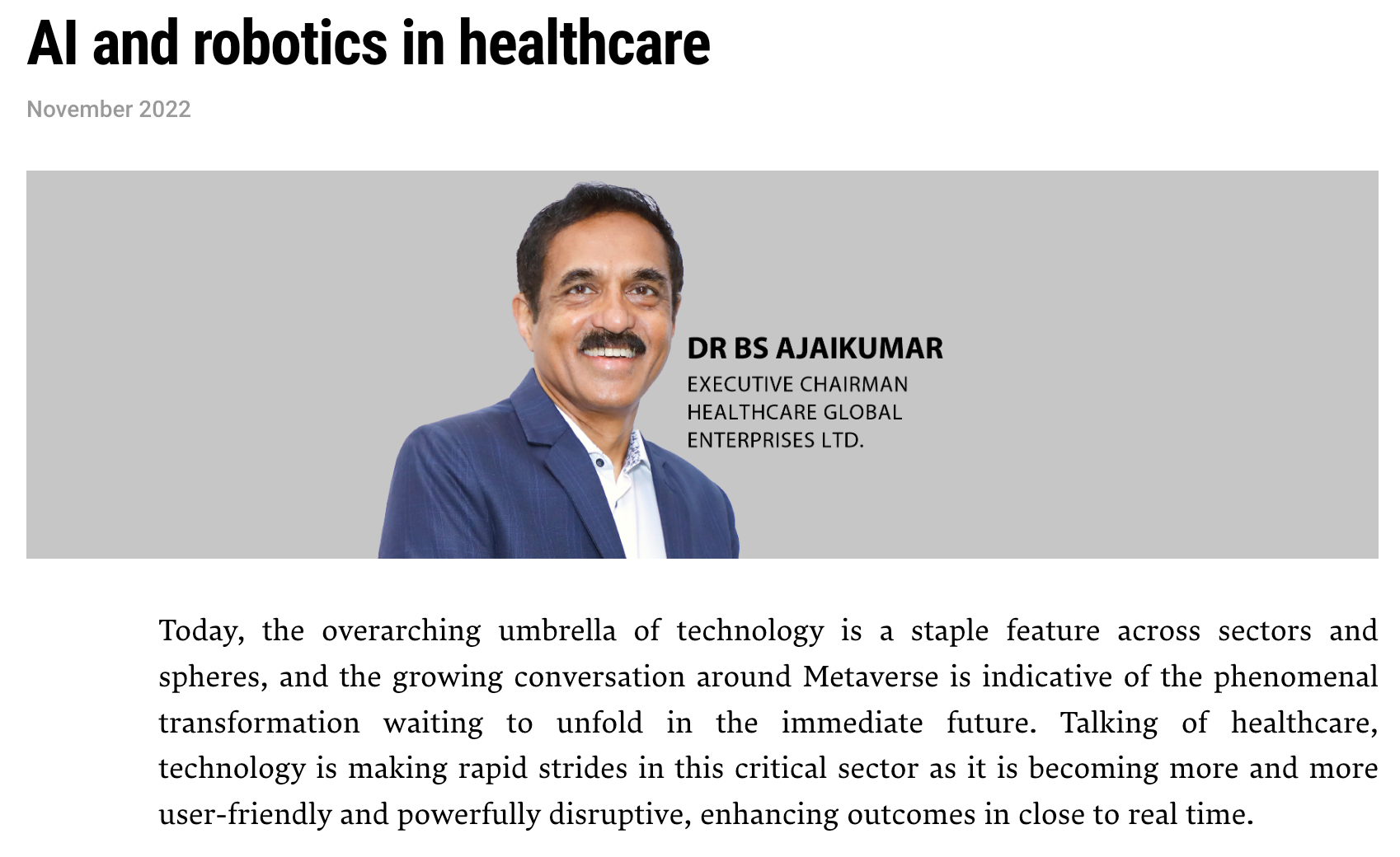
AI and robotics in healthcare
Today, the overarching umbrella of technology is a staple feature across sectors and spheres, and the growing conversation around Metaverse is indicative of the phenomenal transformation waiting to unfold in the immediate future. Talking of healthcare, technology is making rapid strides in this critical sector as it is becoming more and more user-friendly and powerfully disruptive, enhancing outcomes in close to real time.
Thanks to the phenomenal medical and tech advancements, India has rapidly moved up the value chain of cancer care in the last few years. Technology has been playing a key role in the crusade to bring cancer to the level of a chronic disease. Artificial intelligence (AI) and its subsets machine learning (ML) and deep learning (DL) are helping clinicians develop targeted therapies, aimed at early detection, minimizing relapse risks, and reducing mortality rates. Potent and purposeful therapies like immunotherapy, customized cancer vaccines, gene editing, microbiome treatment, and cutting-edge technologies like digital radiotherapy and tomosynthesis bear ample testimony to the phenomenal breakthroughs led by technology.
The tech adaptability times for a physician or clinician are steadily on the decline, thanks to accurately simulated, highly immersive training experiences. This immersive aspect is a virtual game changer in robotic surgeries. Today, robots have ushered in racoon-like approach to surgery with a 360-degree immersive vision and exceptional stability to the tremor precision. Robotics has dramatically improved advanced-stage cancer outcomes. While surgeons have small eyes and big hands, robots have small hands and big eyes, which is why they help surgeons probe deeper into areas, which were inaccessible to human eyes and hands. No wonder, robots have lent new meaning to site location, visualization, and human error mitigation. The haptic sensory feedback has made robotic surgery an intimate experience to such an extent that it hardly seems like a remote mechanism. Gamification has helped practitioners master robotics with significantly shorter learning curves through standardized training programs.
The game-changing paradigms of the next decade include digital diagnostics, IoT and cloud, ultra-fast scans, wearables, blockchain, digital therapies, big data, nano health, AI health, hackathons, system learningm and robotics. More importantly, these technologies will work in unison and not isolation in what will be a solution-centric crosstalk.
Digitization and telemedicine have enhanced the affordability and accessibility of cancer care to the last mile. Going forward, radiomics and pathomics will help manage large datasets of cancer patients. The treatment landscape, as is clear and evident from the rapid progression, is reimagining the future of cancer care and cure. Technology will help us draw enlightening patterns out of biological and clinical data to make early interventions in certain forms of cancers that can be tailored to individual patient needs. Efforts in this direction are ripe with interesting outcomes like biomarkers, which in turn will pave the way for personalized medicine. Genomics is one key area that will thrive on curated data to help detect and treat many lifestyle diseases at an early stage, thereby benefitting the patient who is the end-user and beneficiary of digital transformation.
Having said that, the bedrock of this evolution is clean, accurate, and reliable data, besides scrupulous data integrity and seamless interoperability. We are today at the formative stage of the AI evolution marked by basic intelligence. In the coming years, we will delve deep into fertile areas like the Theory of Mind. However, technology, however powerful it may be, is a key healthcare enabler at best; it can never replace the healing powers of the human touch, interactions, and gestures. We need a patient-centric approach - from pre-admission to post-discharge - aimed at enhancing outcomes, lowering costs, and improving resource management, based on the risk and severity of the disease. The domain of healthcare revolves around the patient, so unless technology serves the larger cause of the patient, it will not serve the purpose in the truest sense, however strong the disruption.